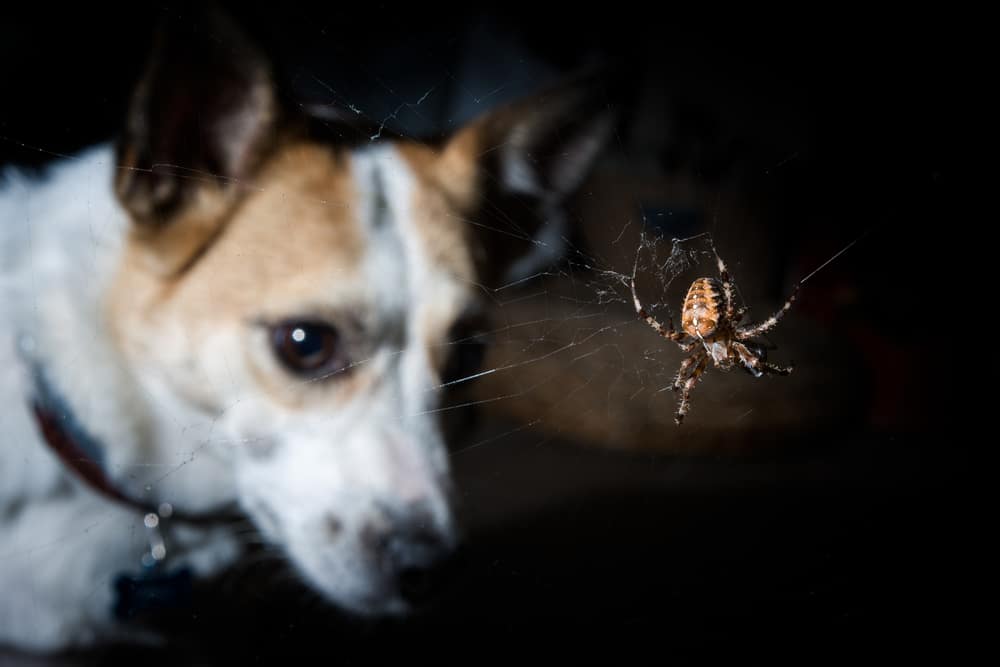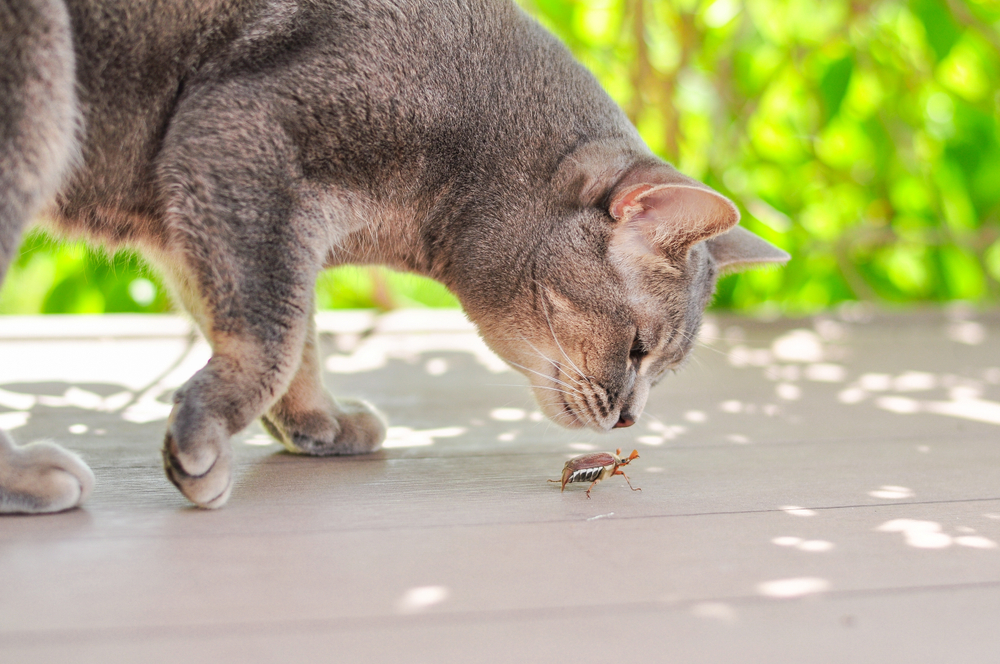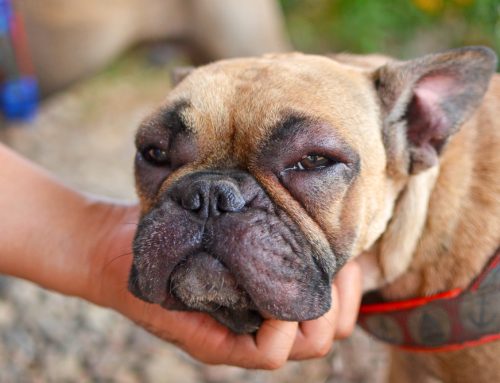Bugs buzz, creep, crawl, climb, and fly—and can also bite or sting your pet. Our All Creatures Animal Hospital team understands your concern as a conscientious pet parent, and we offer information about what bugs are problematic for pets and how you can protect your four-legged friend.
Fleas and pets
Fleas are the most common bugs that cause pets problems. These tiny, wingless parasites can ingest more than 15 times their body weight in blood and can cause pets serious issues, including:
- Anemia — When numerous fleas are present, their voracious appetite for blood can lead to life-threatening anemia. Puppies and kittens are at highest risk.
- Flea-allergy dermatitis (FAD) — Many pets are allergic to fleas, and only a single flea bite can lead to severe itchiness. Skin lesions and hair loss are typically seen on the lower back to the base of the tail and down the rear limbs. Flea dirt (i.e., flea excrement) is commonly present in the affected pet’s coat and on their bedding.
- Diseases — Fleas can transmit diseases including the plague, flea-borne typhus, and bartonellosis.
- Parasites — Fleas can also transmit tapeworms to pets and people.
Protect your furry pal from fleas with a year-round flea prevention routine, using a veterinary-approved product.
Ticks and pets
Ticks are also common problems for pets. These hardy parasites attach to your pet and transmit dangerous diseases, such as Lyme disease, Rocky Mountain spotted fever, anaplasmosis, babesiosis, tick-borne relapsing fever, and tick paralysis. Four tick species found in Washington are known to transmit diseases to pets:
- Western blacklegged tick (Ixodes pacificus) — The Western blacklegged tick can transmit Borrelia burgdorferi, the bacteria that cause Lyme disease. This tick can also transmit anaplasmosis.
- Western dog tick (Dermacentor similis) — The Western dog tick is found west of the Rocky Mountains and can transmit Rocky Mountain spotted fever.
- Rocky Mountain wood tick (Dermacentor andersoni) — The Rocky Mountain wood tick, which also can transmit Rocky Mountain spotted fever, prefers woodland areas and medium height grasses between wetlands and woods.
- Soft ticks (Ornithodoros hermsi) — Soft ticks, which are the main vector for tick-borne relapsing fever, usually feed at night and remain attached for a short time.
To protect your pet, check them for ticks after outings, remove any ticks you find as quickly as possible, and provide a year-round, veterinary-approved tick prevention product.
Stinging insects and pets
Pets are inquisitive creatures who often investigate insects, such as bees, wasps, ants, and hornets, and get stung because of their curiosity. Insect venom can result in problems ranging from mild irritation to life-threatening anaphylaxis. Pets are commonly affected on their face and paws, so you should check your pet for an insect sting if they are pawing at their face or chewing on their paw. Bees may leave behind a stinger, which you should remove as soon as possible, since the stinger continues to secrete venom. Apply an ice pack if the bite area is swelling. You should also contact our All Creatures Animal Hospital team, because your pet may benefit from an appropriate dose of oral antihistamine, which we can provide.
Signs your pet needs emergency veterinary care after an insect sting include:
- Severe swelling — Severe swelling anywhere on your pet’s body requires immediate veterinary attention. Swelling around the head and neck may compromise breathing and should be evaluated as soon as possible.
- Hives — Hives indicate your pet is experiencing an allergic reaction to the insect sting.
- Difficulty breathing — Swelling around the respiratory passages can cause breathing difficulty.
- Excessive drooling — Swelling in the throat can make swallowing difficult and cause excessive drooling.
- Gastrointestinal upset — Insect venom allergies can lead to vomiting and diarrhea.
- Change in mentation — A pet who seems disoriented or nonresponsive after an insect sting needs immediate veterinary care.
- Seizures — Seek emergency veterinary care if your pet has a seizure.
Spiders and pets

The majority of spiders are venomous but cannot significantly envenomate, because their mouthparts are too small to penetrate skin. In Washington, two species are medically significant for pets and people:
- Black widows — Black widow spiders are shiny black with a red hourglass marking on their abdomen. They prefer dark, quiet areas, such as woodpiles, hay bales, cluttered basements, and crawl spaces.
- Yellow sacs — Yellow sac spiders are small with a yellow, white, or green body. They are mainly garden-dwellers in the spring and summer, but may make their way indoors in the fall.
Spider bites can cause signs that vary from minor to severe, and may include a rash, swelling at the bite site, muscle pain and cramping, vomiting, diarrhea, tremors, agitation, increased heart and respiratory rate, and abdominal pain. Protect your pet from spider bites by:
- Keeping your porch light off — Spiders are drawn to prey lured by lights, so keep your porch light off at night to prevent unwanted visitors.
- Checking your pet’s bedding — Check blankets and bedding that you get out of storage for spiders that may have found a comfy place to hide.
- Sealing small openings — Use a caulking gun to fill small holes and gaps to prevent spiders from sneaking into your home.
- Vacuuming — Vacuum your home regularly, especially around door and window frames, behind furniture, and along ceiling and floor edges.
- Clearing clutter — Clear away clutter, such as old furniture and unused boxes, in undisturbed areas of your home.
Contact our All Creatures Animal Hospital team if your pet needs veterinary care after colliding with a creeping, crawling, climbing, or flying insect.














Leave A Comment